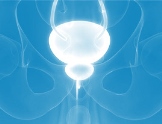Methodology: Liquid Chromatography-Tandem Mass Spectrometry (LC-MS/MS)
Detection indicators: 16 kinds of bile acids-glycocholic acid (GCA), glycodeoxycholic acid (GDCA), glycochedeoxycholic acid (GCDCA), glycoursodeoxycholic acid (GUDCA), glycinolithochol Acid (GLCA), Taurocholic Acid (TCA), Taurolithocholic Acid (TLCA), Taurodeoxycholic Acid (TDCA), Taurochenodeoxycholic Acid (TCDCA), Tauroursodeoxycholic Acid (TUDCA) , Lithocholic acid (LCA), deoxycholic acid (DCA), ursodeoxycholic acid (UDCA), chenodeoxycholic acid (CDCA), cholic acid (CA), hyodeoxycholic acid (HDCA)
Sample type: serum
Specification: 96 servings/box
Clinical significance
At present, serum total bile acid (TBA) is tested clinically, but practice has proved that TBA has poor diagnostic specificity in different hepatobiliary diseases, whether it is acute or chronic viral hepatitis, cirrhosis and non-viral hepatitis, cirrhosis, or extrahepatic biliary obstruction. TBA is all elevated, so it is impossible to identify the disease from the total bile acid index. The changes of serum bile acid profiles in different hepatobiliary diseases are different, and the detection of bile acid profiles will improve the differential diagnosis value of bile acids in hepatobiliary diseases.
The detection and clinical application of bile acid profile has been widely used at home and abroad, and it is of great significance for the early diagnosis and differential diagnosis of intrahepatic cholestasis (ICP) of pregnancy and the evaluation of the efficacy of ursodeoxycholic acid (UDCA) after administration. In the "Cholestatic Liver Disease Diagnosis and Treatment Company (2015)", one of the recommended ICP diagnosis basis is the serum ALT level and the elevated fasting bile acid and glycocholic acid levels. In addition, the changes in the bile acid profile can be used to assist in the diagnosis of liver and gallbladder diseases, monitor the progress of liver and gallbladder-related diseases, and evaluate the therapeutic effects of bile acid drugs. The bile acid profile can also be used to explore the etiology and pathogenesis of bile acid in various diseases, and to tap its important value in the diagnosis, treatment and prognosis of the disease. At present, clinical studies have proved that elevated bile acid levels are associated with cardiovascular disease. Diseases, especially coronary heart disease, have a positive correlation, and the more severe the coronary artery stenosis, the higher the level of bile acid.
The feasibility study of bile acid profile as a new biomarker of liver injury:
Luo Lina conducted a study on 314 healthy people and 331 people with liver damage, and used LC/MS/MS methods to detect serum bile acid profiles. The experimental results of the two groups of people are shown in the figure. In addition to DCA, the IBA of the liver injury group was significantly higher than that of the healthy group. According to the categories of bile acids, the content of bound bile acids in the liver injury group changed more than the free bile acid in comparison with the healthy group.
To evaluate the potential of IBA to distinguish subjects with liver damage from healthy subjects, we performed receiver operating characteristic curve (ROC) analysis. ROC is a classic method used to evaluate the ability of an indicator to diagnose diseases
From the value of AUC, TCA has the highest diagnostic efficiency, followed by GCA, TBA, and TCDCA.
Since liver disease affects the synthesis and metabolism of BAs, BAs and their components have been used as diagnostic and prognostic markers






